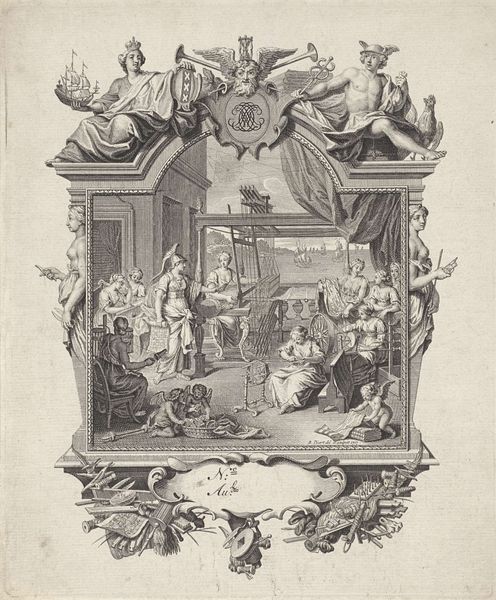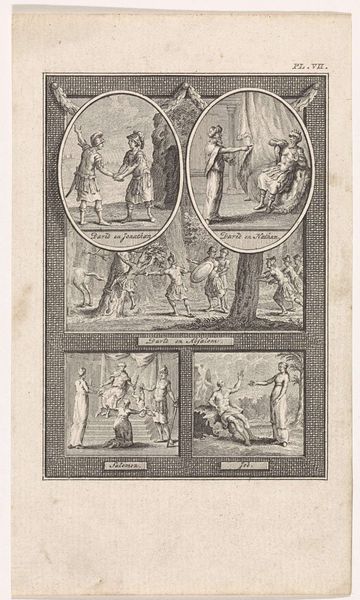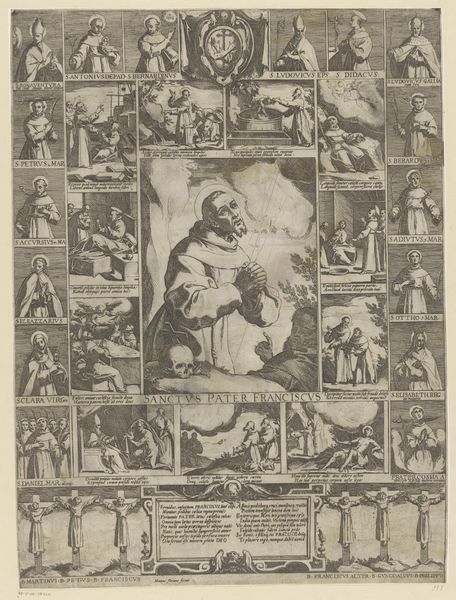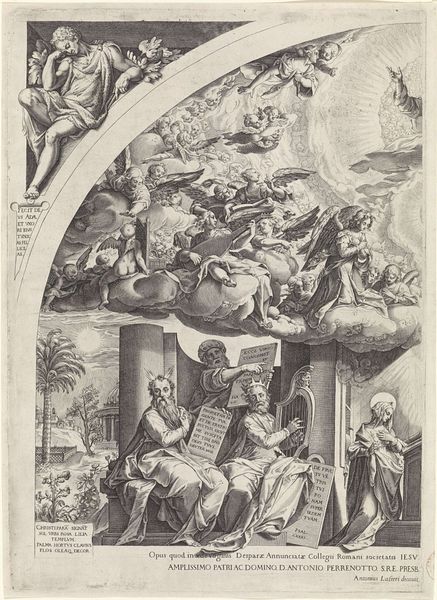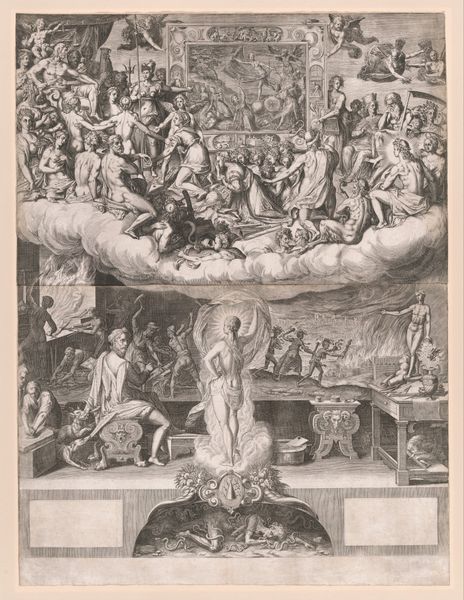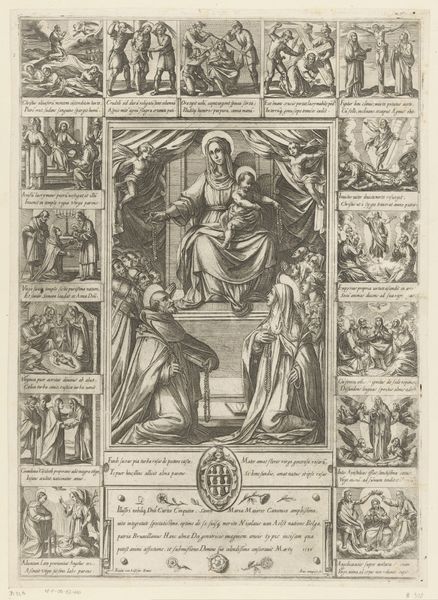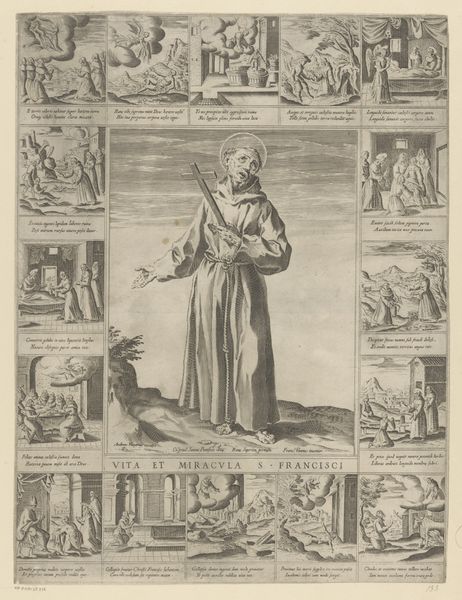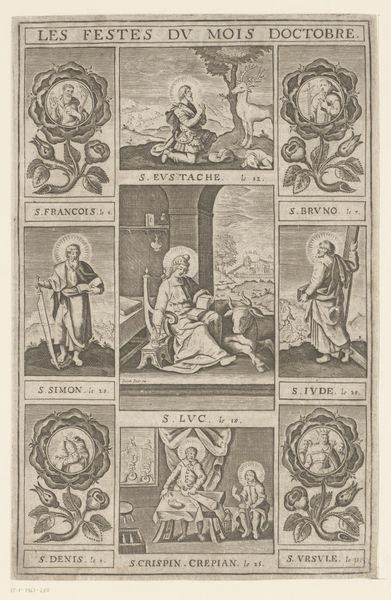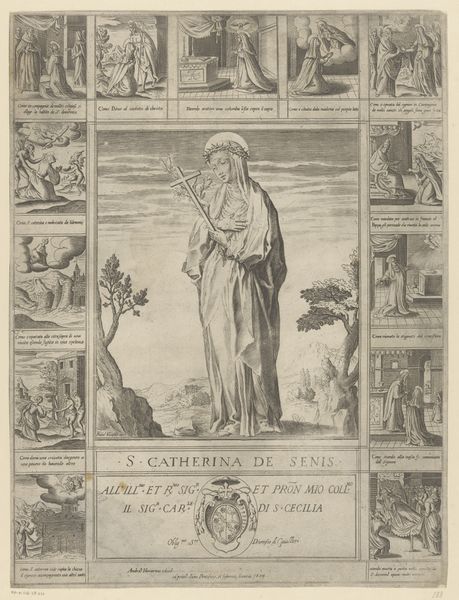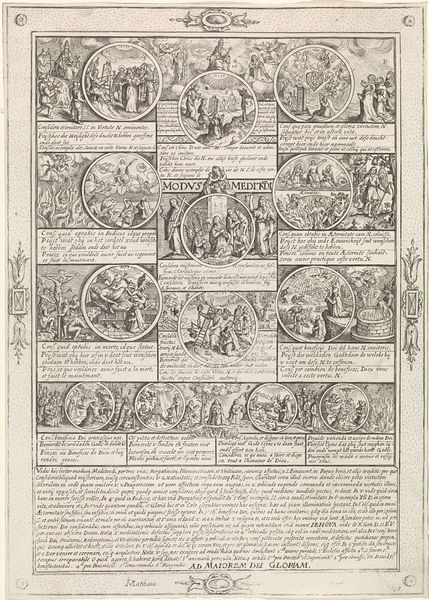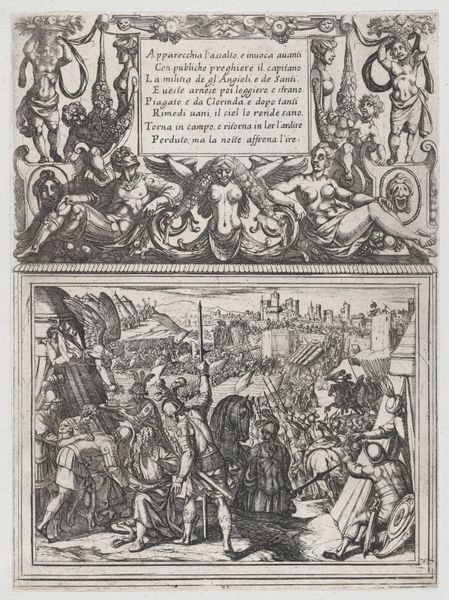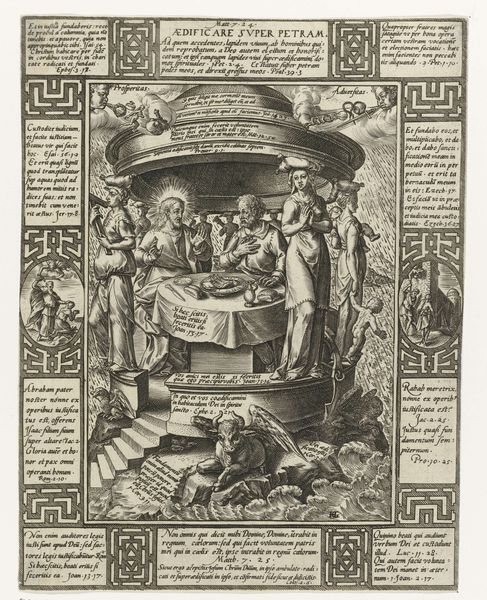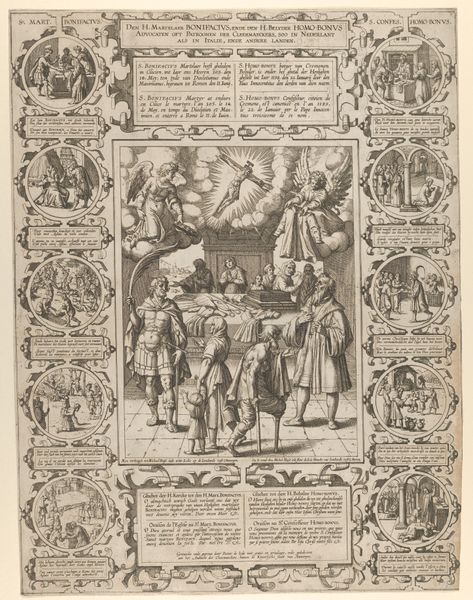
print, intaglio, engraving
#
narrative-art
#
baroque
# print
#
intaglio
#
old engraving style
#
figuration
#
history-painting
#
engraving
Dimensions: height 473 mm, width 335 mm
Copyright: Rijks Museum: Open Domain
Curator: This engraving, simply titled "Het leven van de heilige Laurentius," or "The Life of Saint Lawrence," dates back to 1599 and resides here at the Rijksmuseum. Its creator is currently listed as anonymous. Editor: Intaglio prints such as this tend to yield very contrast-heavy, monochromatic designs. A darkness is evoked in these images with very detailed line work to create cross-hatching effects to vary the tone. Curator: Indeed, this is baroque printmaking, which emerged as an efficient means of disseminating propaganda during the early modern era. Disseminating what one could call persuasive visual information at a large scale was highly achievable due to the accessibility and transportability of prints. Editor: What interests me is how the artist fragments the narrative across numerous smaller scenes. How do you feel these are assembled, the use of orthogonal lines versus diagonals within each small contained panel, the angles of torsion of figures lying prostrate over beds of kindling at dramatically oblique angles? These formal considerations can impact an observer powerfully. Curator: This print depicts not merely Lawrence’s life, but the specific representation and dissemination of his martyrdom. His narrative was co-opted as propaganda and imagery designed to galvanize particular congregations against various emerging reformations across Europe at the time, for which he acted as a powerful symbolic bastion. Editor: So the political message utilizes dramatic positioning for greater visual effect, in your view. Still, there are tonal shifts visible in different corners and smaller squares: see in what areas he renders much wider fields of tonality, and the impact on your eye as you visually glide across the page? These stylistic devices create a strong composition for one’s looking process. Curator: And while the work does stand as a piece of art, it functioned within a complex network of patronage, censorship, and distribution that really impacted both its creation and reception at this moment. These factors determined the subjects available to him at the time, impacting artistic interpretation in both intended and unintended ways. Editor: So in this context, examining the social function provides another interesting lens to apply to the visual devices enacted, especially where certain choices may reinforce socio-cultural factors, to cement this martyred stance within popular visual culture. It's quite the story this work can convey.
Comments
No comments
Be the first to comment and join the conversation on the ultimate creative platform.
